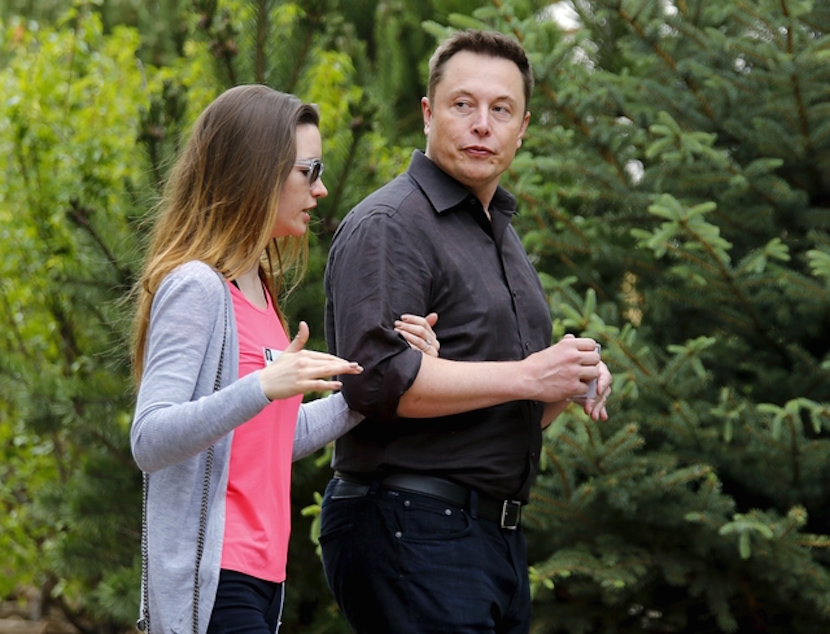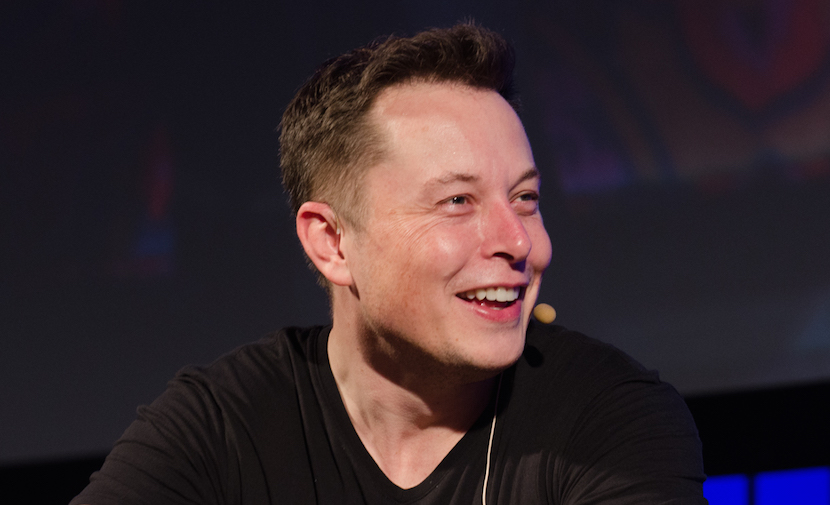South African born and raised super entrepreneur Elon Musk has a problem most businessmen would kill for. Customers love his product so much, there’s no way of ever satisfying demand. Investment analysts may not like the fact Musk is dropping this year’s projected output of Tesla cars from the targeted 55 000 to perhaps 10% less, but buyers won’t be phased. As Musk wrote last night in a letter to shareholders accompanying Tesla’s quarterly results, “Our first priority has been, as still is, to deliver great cars” rather than hit some target imposed by Wall Street. So Mr Market got the mutters and the share price fell. So what? – Alec Hogg

(Bloomberg Business) — People like Tesla’s electric cars so much, it can’t crank them out fast enough. Most companies would love to be in such a position. But for Tesla, it’s becoming a problem.
CEO Elon Musk released Tesla’s quarterly results today and gave an update on where the rapidly growing company is headed. Here are some areas of potential delay:
* Tesla has backed off its full-year forecast for vehicle sales. The company aims to deliver 50,000 to 55,000 vehicles this year. The previous target was for 55,000, without the lower range.
* The potential shortfall is due to possible delays around the company’s space-age all-electric SUV, the Model X. That vehicle—which was originally supposed to go on sale in 2014—is slated to book its first sales in September, with rising production in the fourth quarter. Tesla warned that a delay caused by a single supplier would set the company back 800 vehicles a week.
* There’s another twist: Tesla warned that the switch to Model X production could slow production of the company’s flagship Model S sedan.
* Telsa Energy, the company’s new battery storage unit, also seems to be bending its timeline. The company plans to startproduction “this quarter,” with promises to ramp up in the fourth quarter and beyond. When it announced its new Powerwall storage batteries in May, Tesla said deliveries would start “this summer.” Musk said the company is “basically sold out of what we could make in 2016.”
Maybe these are small tweaks and investors should focus on the bigger picture. Maybe the company is sandbagging a little, limiting expectations so it can exceed them later.
But this isn’t a new problem for Musk. The man who revolutionized electric cars, private space travel, and rooftop solar power is notorious for overpromising on his timelines for industrywide disruption—almost as much as he’s known for eventually succeeding.
The problem is how these little tweaks could add up to an impact on his long-term goals, the ones on which the company’s $34 billion market valuation is based. Musk wants to ramp up from selling 50,000 cars this year to 500,000 in 2020 after he releases his more affordable mass-market Tesla, the Model 3, which is (currently) scheduled to make its first deliveries by the end of 2017.
“Going from here to 500,000 cars a year is a much smaller leap than what we’ve done in the last five years,” Musk said in a conference call with investors.
To reach that goal, Musk would need to roughly double production each year. Tesla today forecast that production next year will average 1,600 to 1,800 cars a week (Model S and Model X combined), or roughly 83,200 to 93,600 a year.
That implies growth of 51 percent to 87 percent. Once again, impressive, but not quite on schedule.
Tesla shares fall after Musk downscales production target
(Bloomberg) — Elon Musk ratcheted back Tesla’s sales targets and said the company is facing challenges with seats and other interior pieces on the forthcoming Model X, deliveries of which are set to begin in late September.
“Our biggest challenges are with the second-row seat,” Musk, the chief executive officer, said during a conference call with analysts. “It’s an amazing seat, a sculptural work of art, but a very tricky thing to get right.” He added that some interior trim components could become roadblocks, but the so- called falcon-wing doors weren’t going to be a problem.
Assembly snags on Tesla Motors Inc.’s first SUV could also slow output of the Model S sedan, Musk said. So now the company may deliver 50,000 to 55,000 autos in 2015, down from an initial target of 55,000. Tesla shares fell as much as 9.3 percent after regular trading Wednesday.
“It was a surprise to us,” said Ben Kallo of Robert W. Baird & Co. about the lower forecast for the year. “In the long run 5,000 cars is not a big deal, but it does raise eyebrows about the longer-term ramp.”
With a final tally of 11,532 Model S sales in the second quarter, the Palo Alto, California-based company delivered 21,577 units in the first half. Tesla sees third-quarter production and deliveries of about 12,000 vehicles including just a few Model X SUVs. That would leave about 16,400 to 21,400 units for the fourth quarter.
Tesla relies on thousands of suppliers and Musk said the pace of progress is “really dependent on which supplier is the slowest and least lucky.”
Musk also reset expectations on 2016 production, saying that Tesla expects to produce 1,600 to 1,800 vehicles a week on average at its Fremont, California, factory, to allow for holidays and times when the factory will halt production to install new tools. Previously, Tesla had projected a weekly run rate of 2,000 cars and SUVs.
Realistic Targets
Musk has set ambitious targets for Tesla and his other companies, SpaceX and SolarCity Corp. As Tesla evolves into a multiproduct company that is making not just electric cars but stationary storage products, expanding globally and building the world’s largest battery factory, Musk is trying to be more realistic in the short term.
“We don’t want to set too-high expectations,” Musk said. “Winning needs to feel like winning. Could we do 2,000 aspirationally? Yes. Do we want to commit to that? Ideally not.”
While lowering the bar for this year and next, Musk said he remains “confident” that Tesla will produce about half a million cars in 2020. He’s said that’s when investors should be able to expect the company to become profitable.
Musk pointed out Tesla made 600 cars annually five years ago. “Now we can produce 600 cars in three days,” he said.
He said that once Tesla is producing in high volumes, it will think about localizing production in different markets, with factories in Asia and Europe.
Immediate Challenges
For now, with the steep increase in output scheduled for late in the year, even a one-week delay could reduce production by 800 vehicles, Tesla said.
The Model X had previously been targeted to go on sale in 2013, then by the end of 2014.
“The Model X is a particularly challenging car to build, maybe the hardest car to build in the world,” he said. “But it is an amazing vehicle and I think it will blow people away.”
As production of the SUV increases, the company will become free cash-flow positive, probably near the end of this year and “certainly” for the first quarter of 2016, Chief Financial Officer Deepak Ahuja said.
The second-quarter loss excluding some items was 48 cents a share, the company said. The average of analysts’ estimates compiled by Bloomberg was for a 60-cent loss.
Model S orders in Asia “nearly doubled from last quarter, helped by the initial success of our revised China strategy,” Musk and Ahuja said in a letter to shareholders. The company also hired a vice president of sales for Asia, whom Musk didn’t identify.
Capital Needs
Tesla has drawn down $50 million of a $750 million credit line, and left open the possibility of going to Wall Street for additional money.
“There’s not a need to raise equity capital,” said Musk. “There may be some value in doing so as a risk-reduction measure.”
The company does have significant investment plans, including the development of a more-affordable car called the Model 3, set to go on sale late in 2017, and construction of its massive battery factory east of Reno, Nevada.
Progress on the so-called gigafactory continues, with manufacturing of battery cells, modules and packs to begin there early next year. Tesla also said it will ramp up production and delivery of its Tesla Energy suite of batteries for use by homes, commercial businesses and utilities in the fourth quarter.
States like California see energy storage as a critical tool to better manage the electric grid, integrate a growing amount of solar- and wind-based generation and reduce greenhouse gas emissions. Tesla has said that its stationary batteries have the potential to scale faster than vehicle sales.
Separately, Musk was asked if Tesla sees a business opportunity in supplying cars for ride-sharing startups like Uber Technologies Inc., or is considering selling on-demand electric mobility services directly on its own platform.
“That’s an insightful question,” said Musk. He declined to answer it.


